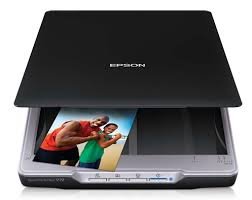Simple Scanning Recommendations for Better Photo Restoration Results
Scanning with any type of scanner - Printer/Scanner combo or Flatbed
Here are some tips to help you get started:
Choose a High-Quality Scanner:
Preferably use a dedicated flatbed scanner with a high optical resolution (at least 300 dpi). Dpi stands for “dots per inch. If you like, instead of purchasing one, many postal or print shops offer this service.
Example of an Flatbed scanner.
Example of an flatbed scan settings page.
Choose a resolution appropriate for your restoration needs. Higher resolutions (600-1200 dpi) are ideal for detailed restoration, while lower resolutions (300 dpi) are suitable for general use.
Many of the later model “All-in-One” Printer/Scanners can scan at 600 dpi or higher. Choose 300- 600 dpi for the best results. Use the flatbed feature not the feeder for scanning photos.
Example of a Printer/Scanner combo.
Example of a Printer/Scanner scan settings page.
Clean the Photo and Scanner Bed:
Before scanning, clean the photo and scanner bed to avoid dust or debris from affecting the image quality. Dust and scratches can be challenging to remove during restoration. Use a quality, clean, soft microfiber cloth.
Scan in Color Mode:
Even if the original photo is black and white, scan it in color mode. This allows you to capture more information and gives us flexibility during the restoration process.
Use Descreening:
If your scanner has a Descreening option, enable it to reduce the moiré.
Moiré occurs in a photograph when a scene, an object or a fabric being photographed contains repetitive details (dots, lines, checks, stripes) that exceed the sensor resolution. The camera produces a strange-looking wavy pattern that is very distracting.
Save and transfer the image to HeritageTree:
Select the format for the scan. Preferably, choose a “non-destructive” format such as a TIF of PNG file type. This simply means that each time edited and saved it isn’t compressed and no data loss occurs. This is not true for JPG files. If you have an original JPG (or Apple’s HEIC) file from a camera shot or scan, forward that file to HeritageTree without further editing.
Photos scanned at higher resolutions and in non-destructive file types can create very large file sizes. This may prevent them from being emailed to HeritageTree. For large files, HeritageTree provides a Dropbox cloud upload option that can accept these larger uploads sizes. Of course, another option is to mail either a USB thumb drive or the actual photo itself.






